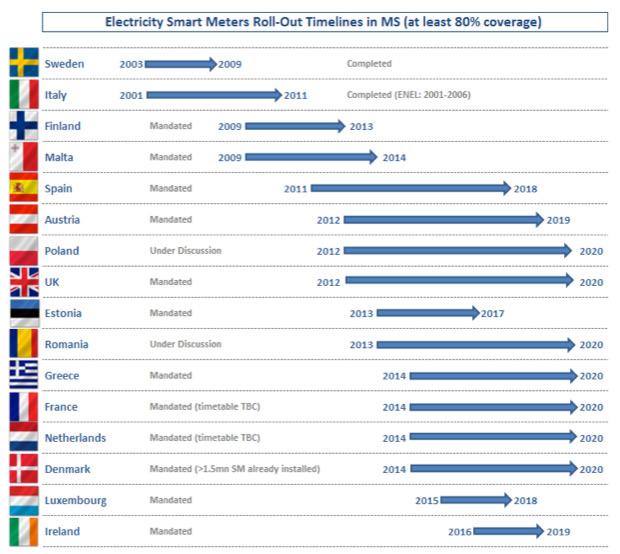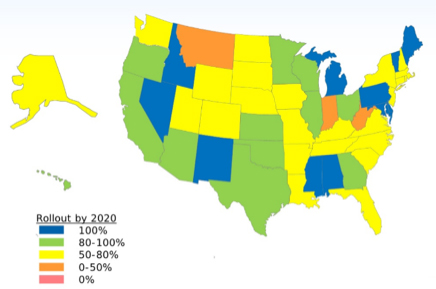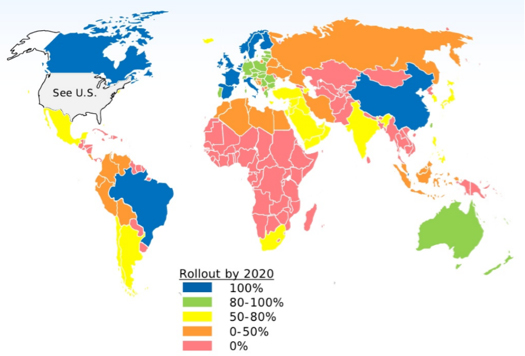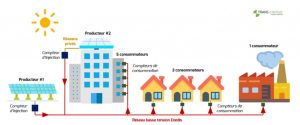Smart meters, including Linky in France, are a key component of smart grids. The following article provides an understanding of what smart meters are, how far they have spread around the world and to what extent their proper use can contribute to the energy transition.
&nbp;
The development of electricity production in the last decades of the 19th century was based on the creation of a market, which implied that, in order to be sold, electricity had to be metered. This led to the development of the first electromagnetic meters (Figure 1), following the 1881 agreement on electricity standards (Read: Histoire de l’électricité and L’électricité : éléments essentiels, génération et transport). Since then, metering techniques have evolved. With the liberalization of the electricity markets at the end of the 20th century, a leap was made towards smart meters because, in the context of the energy transition, the metering of kWh must be accompanied by exchanges of information between sellers and buyers.
1. From the electromechanical meter to the electronic smart meter
There are three types of electricity meters: the electromechanical meter invented at the end of the 19th century, then replaced by the electronic meter in the second half of the 20th century. More recently, the new smart meter has started to spread worldwide.
1.1 How to count kWh sold or purchased?
An electricity meter is a device used to measure the amount of electricity consumed over a given period of time. The unit of measurement is usually the kWh, which is the amount of electricity used to operate an appliance with a power of 1 kW for 1 hour (Read: Les unités d’énergie).
1.1.1. The electromechanical meter
Originally, electrical energy was marketed on the basis of flat rates that took into account the number of lamps and their power. In 1880, the Edison meter was invented during a competition launched by the city of Paris. Considered unreliable, this meter did not immediately supplant the flat rate system.
It was not until 1889 that an electric meter on alternating current appeared, and then in 1894 that the electric disc meter was born. It works thanks to the rotation of a metal disc whose speed is proportional to the consumption of the household: the faster the disc turns, the higher the consumption is. Each rotation corresponds to a certain amount of kWh consumed, depending on the meter’s calibration. Improved since its appearance, this meter, still in use, is the most widespread, but, unlike more recent meters, it does not provide accurate information on daily electricity consumption.
1.1.2. The electronic meter
The electronic meter is the second generation of meter. It no longer has a wheel but contains a U-shaped conductor, with the electricity purchased entering the first branch and leaving towards the user installations in the required quantity and in real time. The conductor is surrounded by a Hall-effect sensor which produces a voltage that is an exact reflection of the outgoing current[1]. All information is displayed on a screen. The meter thus consists of a screen and two buttons.
This meter does not have the ability to communicate remotely. It therefore requires manual reading operations, which can be avoided with smart meters that have the ability to communicate remotely in two directions.
1.2.What is a smart meter?
A smart meter (Figure 2) is a meter that measures in a detailed and precise way, and possibly in real time, a consumption of electricity, water or gas. The data is usually transmitted by power line carrier (PLC) to the distribution network operator in charge of the metering. Smart meters are used to produce invoices on actual consumption, to identify wastage, line losses or the items that cost the customer the most. The meter can also be bi-directional and remotely programmable. These functions are the basis for the evolution of networks (electricity, water or gas) towards “smart grids” [2] (Read: Des réseaux électriques aux smart grids).
1.3. Architecture of a smart meter system
A smart metering system implies, on the one hand, the implementation of smart meters capable of storing the information resulting from energy measurements and, on the other hand, the establishment of data transmission systems allowing the fast and reliable circulation of the information contained in the meters between users, network managers and suppliers [3].
The smart meter is equipped with bi-directional communication capabilities (transmission and reception of information) and allows remote reading as well as the control of the energy supply. Communication takes place between a set of meters installed at the users’ premises and a concentrator located nearby in the public distribution station, via power line carrier technology (PLC), which gathers this data and transmits it to the network operator in an encrypted and secure manner. Each meter and concentrator is associated with a PLC modem that encodes and decodes the data into an electrical signal and superimposes it on the 50 Hertz electrical current (Figure 3).
Subsequently, at the concentrators, the data is encoded in digital format and transmitted to the distribution system operator via the GPRS or GSM telephone network [4].
The ten minimum functionalities recommended by the European Commission are as follows (Table 1):
Table 1 Minimum functionalities recommended by the European Commission
|
Consumer
|
|
|
Metering operator
|
|
|
Commercial aspects of supply
|
|
|
Security and data protection
|
|
|
Distributed generation
|
|
|
Source: Benchmarking smart metering deployment in EU, June 2014
|
|
2. The benefits of smart meters
Why did we move to the stage of smart meters? Is there any economic interest in replacing the non-smart electronic meter?
2.1. The origin of smart meters
The smart meter is at its origin a means or rather a technical answer set up to allow the effective opening to competition of the electricity supply to all the consumers (Read: Les marchés électriques : complexité et limites de la libéralisation des industries électriques). Consumers can thus easily choose the supplier of their choice and are supposed to benefit from more advantageous tariff offers. Thanks to this technical means, each supplier can propose differentiated offers to better satisfy diversified needs. This also means that consumers are supposed to be better informed so that they can choose freely between the offers available to them on the basis of a better knowledge of their electricity consumption. To this end, it is necessary for consumers to be able to obtain more frequent and more detailed information on the characteristics of their electricity consumption, which is made possible by the smart meter [5] Indeed, given the volume of information to be processed by network operators and energy suppliers in the mass market, only the widespread use of advanced meters can ensure an efficient and reliable flow of data [5].
2.2. The expected benefits
Smart meters are expected to meet three objectives [7]:
- The improvement of the market’s operating conditions, thus creating a favourable framework for the arrival of new entrants and increasing consumer confidence.
- The development of energy demand side management (DSM), in a context where this management becomes everyone’s matter, in a perspective of energy efficiency and sustainable development;
- Improving the overall performance and service provided by network operators for the benefit of all stakeholders, especially consumers and suppliers.
Although the regulatory frameworks for the deployment of advanced metering systems vary from country to country, there is nevertheless a recurrence of the types of benefits expected in terms of power system performance in the form of decreases [8]:
- Billing costs ;
- Customer management costs;
- Metering fraud;
- Customer service calls;
- Meter verification costs;
- Network troubleshooting costs.
2.3. result of cost-benefit analyses in the european union (eu)
The cost-benefit analysis (CBA) of the dissemination of smart meters was carried out for all EU member countries (Table 2).
Table 2: Cost-benefit of smart meters in the EU
|
Overall cost of the project (billion euros)
|
Number of meters (millions)
|
Global cost per meter (euros)
|
Benefits per meter (euros)
|
|
|
Germany
|
14,5
|
47,9
|
546
|
493
|
|
Austria
|
3,2
|
5,7
|
590
|
694
|
|
Belgium
|
||||
|
– Brussels Capital
|
0,46
|
0,62
|
NA
|
NA
|
|
– Wallonia
|
2,23
|
1,9
|
NA
|
NA
|
|
– Flanders
|
1,9
|
3,45
|
NA
|
NA
|
|
Czech Republic
|
4,4
|
5,7
|
766
|
499
|
|
Denmark
|
0,31
|
3,28
|
225
|
233
|
|
Spain
|
NA
|
27,77
|
NA
|
NA
|
|
Estonia
|
NA
|
0,7
|
110
|
191
|
|
Finland
|
0,69
|
3,3
|
210
|
NA
|
|
France
|
4,5
|
35
|
135
|
NA
|
|
Greece
|
1,7
|
7
|
309
|
436
|
|
Ireland
|
1,04
|
2,2
|
473
|
551
|
|
Italy
|
3,4
|
36,7
|
94
|
176
|
|
Latvia
|
0,75
|
1,09
|
302
|
18
|
|
Lithuania
|
0,25
|
1,6
|
123
|
82
|
|
Luxembourg
|
0,035
|
0,26
|
142
|
162
|
|
Malta
|
NA
|
0,26
|
NA
|
NA
|
|
Netherlands
|
3,34
|
7,6
|
220
|
270
|
|
Poland
|
2,2
|
16,5
|
167
|
177
|
|
Portugal
|
0,64
|
6,5
|
99
|
202
|
|
Romania
|
0,71
|
9
|
99
|
77
|
|
United Kingdom
|
9,3
|
32,9
|
161
|
377
|
|
Slovakia
|
0,069
|
2,65
|
114
|
118
|
|
Slovenia
|
NA
|
NA
|
NA
|
NA
|
|
Sweden
|
1,5
|
5,2
|
288
|
323
|
|
Source: Benchmarking smart metering deployment in EU, June 2014
|
||||
3. Distribution of smart meters in the mid-2010s
How far have the various countries, in Europe and outside Europe, progressed in the distribution of smart meters?
3.1. in Europe
In Europe, the deployment of advanced metering systems is an objective set by the European Union (EU) in its Directive 2006/32/EC, which states that ” Member States shall ensure that, insofar as is technically feasible, financially reasonable and proportionate taking into account the potential for energy savings, final customers in the electricity sector […] are provided with competitively priced individual meters that accurately measure their actual consumption and provide information on when energy has been used. It is up to each member country to transpose the directive into its national legislation, which has been done in France, notably with the law of 10 February 2010 on the development and modernisation of the public electricity service.
Subsequently, based on the positive results of the CBA in more than two thirds of the countries, the Member States committed themselves to continue the deployment of smart meters [9]. In 2014 (Figure 4):
- 16 Member States (Austria, Denmark, Estonia, Finland, France, Greece, Ireland, Italy, Luxembourg, Malta, the Netherlands, Poland, Romania, Spain, Sweden and the United Kingdom) had already carried out or were planning to carry out a large-scale deployment of smart meters by 2020 or earlier. For two of them (Poland and Romania), the CBAs had led to positive results, but official decisions on deployment were still pending;
- in seven Member States (Belgium, Czech Republic, Germany, Latvia, Lithuania, Portugal and Slovakia), CBAs for large-scale deployment by 2020 were negative or inconclusive, but in Germany, Latvia and Slovakia, smart meters were found to be economically justified for certain consumer groups.
Europe’s goal is to equip at least 80% of consumers by 2020. In 2014, almost 45 million smart meters have already been installed in three Member States (Finland, Italy and Sweden), i.e. 23% of the planned installations in the EU by 2020.
45 billion for the installation of almost 200 million smart meters by 2020, i.e. approximately 72% of European consumers [10].
All the countries of the European community are involved in this vast program with different degrees of maturity as shown in the table of the European Commission report (Figure 5).
3.2. In the rest of the world
The deployment of smart meters does not only concern Europe but the whole world, in the wake of the energy transition and the associated smart grid of which the smart meter is a basic building block.
The number of smart meters installed in 2017 worldwide is estimated at 700 million, half of them in China.
This number should reach 1.5 billion in 2021. In the United States, their number is 70 million (Figure 6).
China plans to install an additional 500 million smart meters starting in 2018, and Japan, 80 million in 2020. In Quebec, Hydro-Quebec has deployed more than 3.8 million new generation meters, or 97% of the total number to be installed [11].
According to the Demand Response and Smart Grid coalition (DRSG) [12], the global deployment plan by 2020 is as follows (Figure 7).
4. Future prospects and operations in the service of the community
These prospects are shaped by the requirements of the new electricity grids, the opportunities offered by smart meters, but also the reluctance that their dissemination is causing in some countries.
4.1. requirement of electricity networks in the energy transition
The low-voltage network is one of the cornerstones of the energy transition, since more than 80% of the new renewable production facilities are connected to the electricity distribution networks. The hosting of these intermittent productions requires more intelligence in the management of the networks. Indeed, photovoltaic production is increasing dramatically on low-voltage networks, generating voltage issues, disconnections of inverters and production losses for users. Similarly, the electric vehicle will become more widespread, leading to a transfer of thermal energy to electrical energy drawn from the low voltage network. Finally, new uses tend to appear and become widespread such as load shedding or consumption shifting. The low-voltage network must deal with this new situation. Until now, this part of the network has been very little monitored and controlled because the centralization of energy did not make it an active part of the network. From now on, the decentralization of energy in progress with the deployment of microgrids connected to the grid requires more monitoring and measurement [13].
4.2. The opportunities offered by smart meters
The complexity of the low voltage network architecture is such that the generalization of measurement means, as it is done at the transmission level, is not possible. However, each smart meter, whose primary role is to bill energy to consumers, is in fact a measurement point. This measurement, conditionally upon anonymization and that the measurements are accessible over a very limited period of time, can be used to improve the public distribution network and, with appropriate processing via advanced technologies such as ” machine learning “, can increase its capacity to host more decentralized production or new uses such as the electric vehicle. This is typically what is proposed by certain start-ups with a high technological content that combine knowledge in electrical networks, IoT (Internet of Things), and machine learning [14].
4.3. Fears about data confidentiality and supposed health risks
These two types of fears are often mixed.
4.3.1. Data confidentiality
The issues of access to data and respect for privacy are the subject of particular attention in all countries with the National Commission for Information Technology and Freedom (CNIL) in France or other equivalent agencies in Europe, such as the Agencia Española de Proteccion de Datos (AEPD) in Spain or the Virtuelles Datenschutzbüro in Germany.
As far as smart meters are concerned, all the metering information is encrypted at the meter level. Only a consumption index is sent to the distribution network operator. Information on the load curve is only sent to the energy supplier with the customer’s express consent.
In France, the CNIL recommends that load curves should not be collected systematically, but only when this is justified by the need to maintain the network or when the user expressly requests it in order to benefit from particular services.
4.3.2. Health risks
Two points should be emphasized: the sending of information via the electrical network in PLC (power line carrier) does not last all day, but only a few seconds per day; the meter sends its information to a concentrator, located in the transformers of the district, via power line carrier (PLC) along the electrical cables, and not by radioelectric waves, like the mobile phones or the Wi-Fi connection.
In France, the National Agency for Food, Environmental and Occupational Health Safety (ANSES) published its opinion on 5 December 2016 on the assessment of the population’s exposure to electromagnetic fields emitted by smart meters, following a referral from the Directorate General for Health. It notes that ” the levels of exposure generated by the emissions are very low compared to the regulatory limit values “, that ” Linky meters, whether in electric or magnetic fields, are the source of an exposure comparable to that of other electrical equipment already used in homes for many years ” and that ” given the low levels of exposure generated by the meters and concentrators, it is unlikely that these devices represent a risk to health in the short or long term“.
5. Conclusion
Smart meters are a major tool for the energy transition. In addition to the obvious simplification they represent for operators, they allow for more efficient control of the network, the integration of new means of production, new forms of consumption and, above all, they allow consumers to better understand and therefore better control their electricity consumption. The smart meter is a product of great technological quality, which must be used in such a way as to take advantage of its full potential. This metering tool will only be fully exploited if consumers take ownership of it, understand how it works and what is at stake, and if offers allowing the use of metering data are developed. It is on this condition that the objectives of energy optimization and better energy supply will be achieved.
Notes and references
[1] The “classical” Hall effect was discovered in 1879 by Edwin Herbert Hall, who stated it as follows: ” an electric current passing through a material bathed in a magnetic field, generates a voltage perpendicular to the latter “.
[2] Wikipedia https://fr.wikipedia.org/wiki/Compteur_communicant
[3] CRE Advanced metering systems http://www.cre.fr/reseaux/reseaux-intelligents/systemes-de-comptage-evolues
[4] CRE advanced metering systems http://www.cre.fr/reseaux/reseaux-intelligents/systemes-de-comptage-evolues
[5] Wikipedia https://fr.wikipedia.org/wiki/Compteur_communicant
[6] CRE advanced metering systems http://www.cre.fr/reseaux/reseaux-intelligents/systemes-de-comptage-evolues
[7] CRE advanced metering systems http://www.cre.fr/reseaux/reseaux-intelligents/systemes-de-comptage-evolues
[8] CRE advanced metering systems http://www.cre.fr/reseaux/reseaux-intelligents/systemes-de-comptage-evolues
[9] Benchmarking smart metering deployment in EU, June 2014
[10] Benchmarking smart metering deployment in EU, June 2014
[11] https://www.compteur-linky.com
[12] Metering & smart energy international
[13] Microgrids: how they contribute to the energy transition. BOUTIN Véronique, FEASEL Mark, CUNIC Kevin, WILD Jean.
The Encyclopedia of Energy is published by the Association des Encyclopédies de l’Environnement et de l’Énergie(www.a3e.fr), contractually linked to Grenoble Alpes University and Grenoble INP, and sponsored by the Academy of Sciences.
To cite this article, please mention the author’s name, the title of the article and its URL on the Encyclopedia of Energy website.
The articles of the Encyclopedia of Energy are made available under the terms of the license Creative Commons Attribution
– Noncommercial – No Derivative Works 4.0 International.


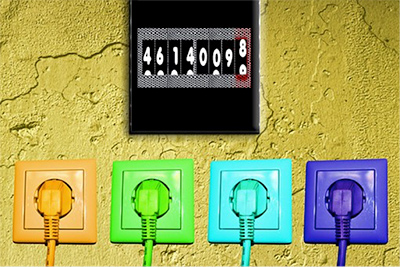
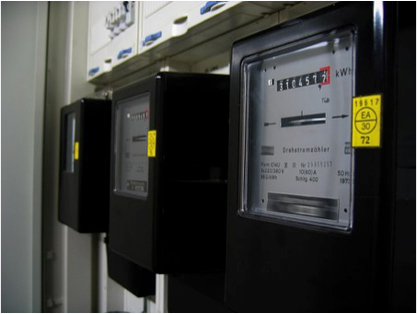
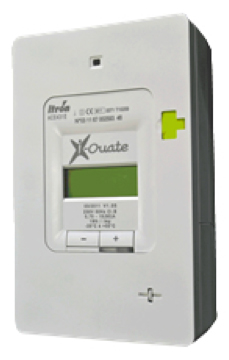
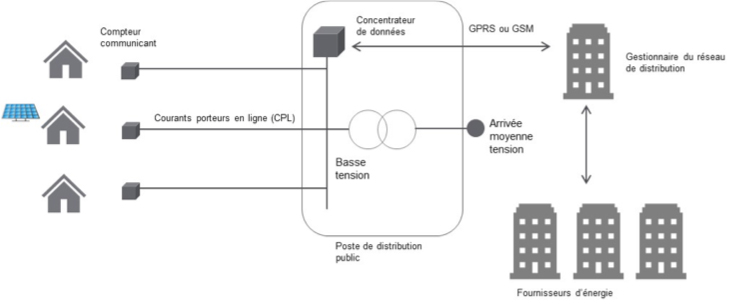
![Fig. 4 : Déploiement des compteurs communicant en Europe. La carte indique les pays d’Europe pour lesquels l’analyse coût bénéfice s’est avérée positive (« positive CBA Cost Benefit Analysis »), et pour lesquels le plan de déploiement a été décidé, suite à cette analyse [1] selon une feuille de route de déploiement.](https://www.encyclopedie-energie.org/wp-content/uploads/2018/05/art172_fig4_deploiement_compteurs.jpg)
